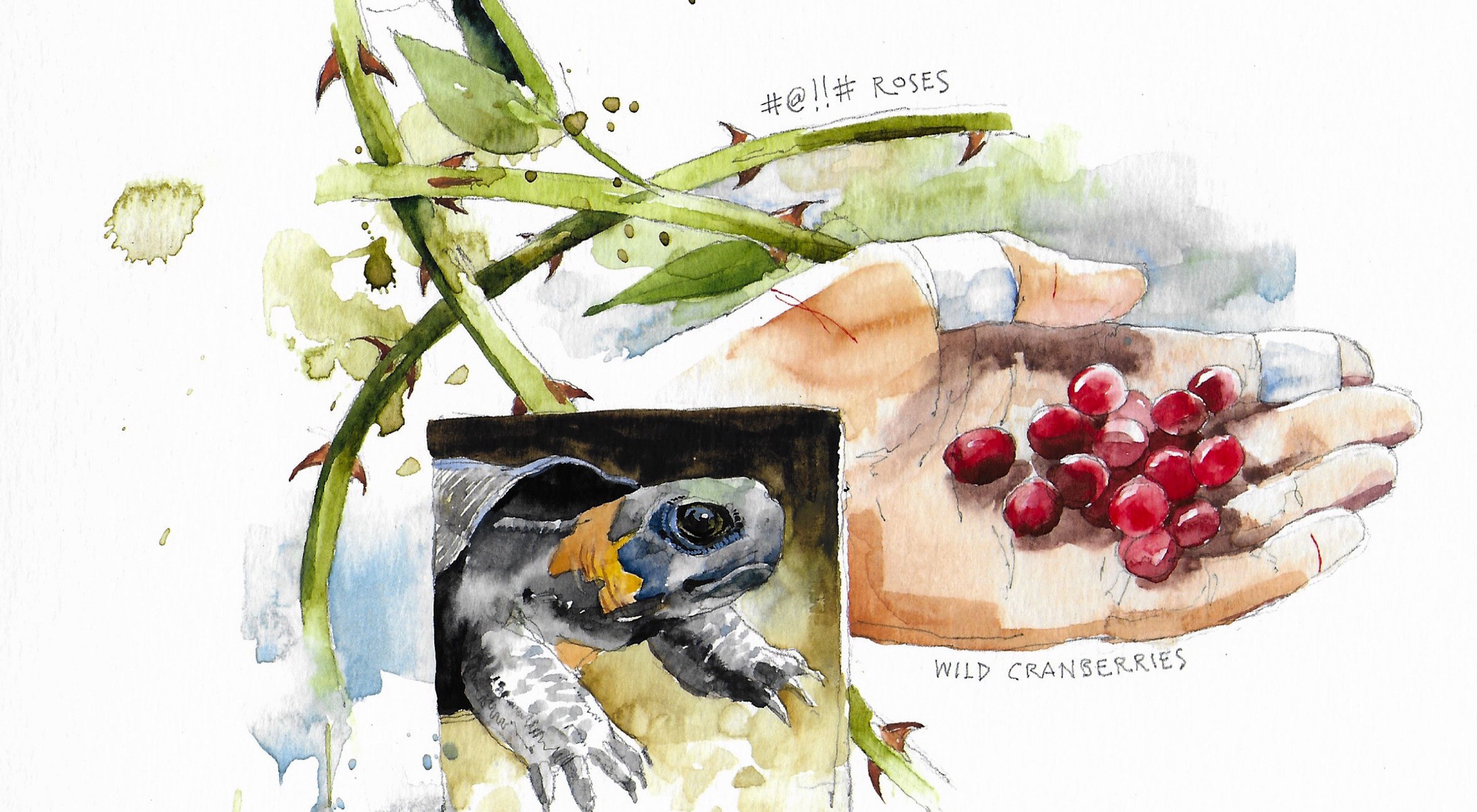The pile of invasive rosebush cuttings sits about waist-high and 5 feet long. This morning, I’ve learned the trick is to hold the branches tight as I haul them away; otherwise, the mass pulls apart as thorns snag on the ground and other trees. So I lean over what will be my 10th pile of the day and give it a bear hug, knowing that my work jacket and leather gloves will stop most of the thorns. I keep my face clear of loose branches and curse—long, hyphenated strings of curse words—under my breath as I carry nature’s barbed wire to the side of the road.
I volunteered for this assignment. The workday at The Nature Conservancy’s bog preserve near the small community of Shady Valley, in the Appalachian Mountains of Tennessee, was arranged by Gabby Lynch, TNC’s director of land protection in Tennessee. About 15 volunteers from state and federal land-management agencies, local conservation groups and even the Zoo Knoxville are here, helping remove invasive multiflora rose. From the road, the bog looks like a mile-wide overgrown pasture. But between us and that wild expanse stands a barricade of 8-foot-tall tangles of this stupid, merciless, vile rosebush.
Earlier, Lynch split us into teams of three: “One person will cut the plant at the base. The second person will use herbicide.” She held up a narrow plastic bottle that looks like a fat permanent marker with a spongy tip. “We want to use as little of this as possible. You will need to dab some on the cut end of each stem; otherwise these plants will be just as big next summer.” Both of those jobs sounded like too much responsibility for me. “The third person will carry the cuttings to a pile where the fire department will later burn them.” Bingo.
And here I am three hours later, wishing I had chosen job number two. By the time Lynch calls the lunch break, I have run out of English curse words and moved on to French, Spanish and German.
We settle in a grassy field. Lynch tells us that where we’re sitting used to be as thick with multiflora rose as today’s work site. This spot was cleared out by a similar crew of volunteers from TNC’s Bog Learning Network just last year.
Lynch goes on to tell us about how the natural bogs in this valley had been ditched, drained and converted into farm fields throughout the 1900s. But the farmland can be problematic “because it’s really mushy.” In the 1980s, the discovery of threatened bog turtles—a tiny species of turtle—in Shady Valley spurred a decades-long initiative to rebuild the bogs. The Conservancy bought the land to create this 800-acre network of preserves.
The process of turning a field back into a bog is not so easy, Lynch tells us. Construction equipment was brought in to break up the farms’ drainage systems. Low dams were added to the outflowing creeks to keep the water level up.
“Right after we did that, the number of bird species we recorded here went way up,” she says. The native bog plants almost immediately returned, growing from dormant seeds that had waited decades in the soil for the water to return.
The rest of the afternoon goes better. I become accustomed to the thorns, and I stop cursing. By day’s end, our team has built a stack of cuttings 6 feet tall and 40 feet long. I wish I could see it burn.
For fun, Lynch leads us single file into the bog to find wild cranberries. They are reddish white, floating on the surface of the shallow water. “Can we eat them?” someone asks. Lynch says yes. They crunch like tart little apples.
The taste lingers as we slosh our way back to the clearing. A few hours ago, this spot was an impassable wall of thorns. In a few months, it will look like a mountain bog again. I’m excited to have played a small part—offering my little bit of pain for a lot of gain.

